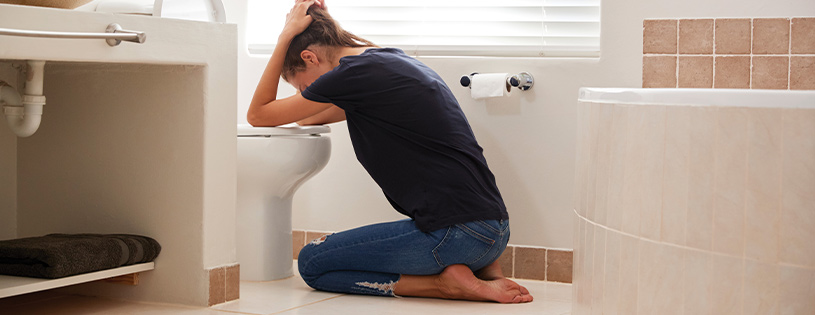Muscle Dysmorphia
Muscle Dysmorphia: An Un-Recognized Type of Body Dysmorphic Disorder
Muscle dysmorphia is a mental disorder in which a person believes their physique and muscles are too tiny. Muscle dysmorphia is more commonly associated with men but it can also affect women. Despite the fact that muscle dysmorphia (MD) is a bodily dysmorphic disease, it has some parallels to eating disorders (ED).
Overview OF MD
Muscle Dysmorphia (MD) is a term used to describe an excessive preoccupation with one’s own muscularity. It’s characterized by a high desire to gain muscle mass while maintaining a low body fat percentage.
Many MD patients are resistant to treatment. Recognizing that you have a problem and seeking help from a professional, on the other hand, can give you the best chance of beating MD. If you suspect you might have MD or another type of Body Dysmorphic Disorder (BDD), you should see an experienced healthcare practitioner who can help you develop a treatment plan.

Symptoms of Muscle Dysmorphia
There are few valid physical or psychological factors to diagnose muscular dysmorphia aside from measuring a person’s Body Mass Index (BMI).
The following are some of the most commonly reported symptoms:
- Considering becoming more muscular for an extended period of time
- Excessive monitoring of the body
- Unrealistic dietary and exercise plans, which can cause severe distress.
- Dissatisfaction with one’s physical appearance, particularly muscularity and size
- Despite evidence to the contrary, a strong sense that one’s muscles are inadequate.
- Active avoidance of situations that could result in bodily exposure
- Due to muscularity concerns, avoiding persons, places, or activities
These symptoms frequently obstruct daily obligations and well-being, including job and family interactions.
Causes of Muscle Dysmorphia
Muscle dysmorphia is caused by a variety of factors that are unknown. Muscle dysmorphia, like many other mental health illnesses, can be caused by a mix of factors, including familial history of the disorder, brain abnormalities, and poor body or self-image evaluations or experiences. Muscle dysmorphia has been identified as a subtype of obsessive-compulsive disorder in several investigations. Others have suggested that it could be a reaction to physical or sexual abuse. A link has also been found between being a victim of childhood bullying.
Committed to helping
people who want to help themselves
Risk Factors of Muscle Dysmorphia
Bodybuilders and others who lift weights are thought to be at a higher risk than the general population because they frequently engage in muscle-building activities. People with MD have higher BMIs and greater muscle mass than the ordinary individual. A 2013 study looked at the risk of acquiring MD in male and female athletes who were both competitive and noncompetitive and discovered that men had a considerably higher risk of MD than women. Athletes who competed were more in danger than those who did not compete. Athletes who lifted weights to change their bodies’ appearance were more at danger than those who aimed to improve their performance.
Muscle Dysmorphia and Co-occurring Disorders
Supplements may be used excessively by people with muscular dysmorphia to help them achieve an unattainable body image. This can sometimes put them at risk for serious health problems. In order to grow muscle mass even further, people with this disease may utilize illegal medications like anabolic steroids or testosterone. People with muscular dysmorphia are prone to substance misuse and eating problems because they are susceptible to image-related ideas and routines.
Prevention of MD
Muscle dysmorphia cannot be prevented. Since it commonly begins in early adolescence, detecting the illness and initiating treatment early may be beneficial. Long-term maintenance treatment may also help prevent muscular dysmorphia symptoms from relapsing.
Diagnosis of Muscle Dysmorphia
The Muscle Dysmorphic Disorder Inventory can be used to examine factors that contribute to the development of MD. There are 13 items in this survey, with answers ranging from “never” to “often.” The following are some of the items that appear on this survey:
- I wish I had stronger arms.
- Due to my workout/exercise schedule, I had to cancel social engagements with friends.
- I feel depressed when I skip one or more days of exercise.
- When people see me without a shirt, it makes me feel self-conscious.
- I hate my physical appearance.
Committed to helping
people who want to help themselves
Treatment of MD
Many people with muscle dysmorphia don’t realize they have it. The first step is to find those who are struggling. There’s no medicine specifically for this condition. However, a doctor can help spot harmful thoughts and behaviors that are causing the problem.
CBT (a type of talk therapy) has proven to be very helpful in treating muscle dysmorphia. While CBT is the best treatment, some antidepressants can also help manage the obsessive side of the condition.




